Peru is a country rich in cultural and natural heritage, as evidenced by its numerous UNESCO World Heritage Sites. Here are 12 of the most notable sites in Peru that are recognized by UNESCO for their exceptional cultural and natural significance.
Machu Picchu
Machu Picchu is a 15th-century Inca citadel located in the Andes Mountains of Peru. It is one of the most famous and recognizable landmarks in South America. Also, Machu Picchu is one of the greatest architectural and engineering feats of the ancient world.
The site was built as a royal estate for the Inca emperor Pachacuti. It was later abandoned after the Spanish conquest. Despite its remote location, American explorer Hiram Bingham rediscovered Machu Picchu in 1911. Since then, it has become one of the most popular tourist destinations in the world. Today, Machu Picchu is a UNESCO World Heritage Site. It attracts thousands of visitors each year who come to admire its stunning architecture, breathtaking views, and rich cultural history.
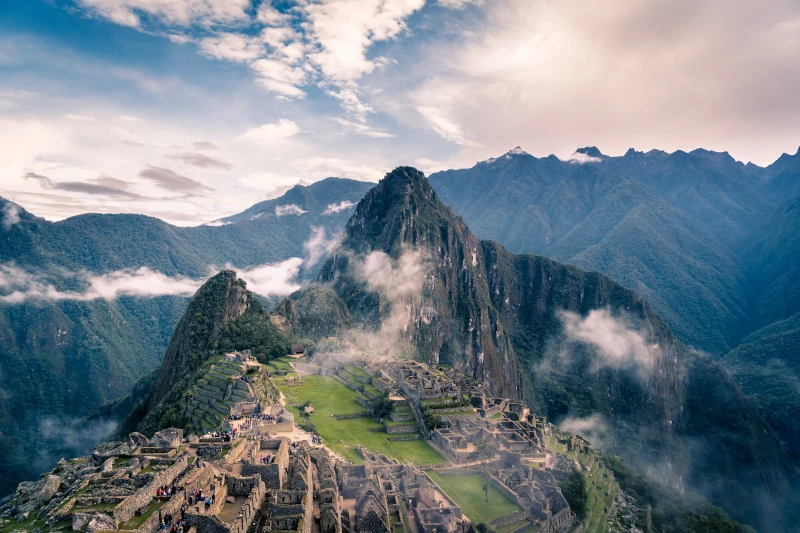
Chan Chan
Chan Chan is the largest adobe city in the world, located near the city of Trujillo in northern Peru. It was the capital of the Chimu Kingdom, which flourished from about 900 to 1470 AD. It is considered one of the greatest examples of pre-Columbian urban planning in South America. Large walled compounds made the citadel of Chan Chan. Each of the compounds was a palace complex for the royal family and its retainers.
Today, the ruins of Chan Chan cover an area of around 20 square kilometers. It offers a glimpse into the sophisticated architectural and cultural achievements of the Chimu people. In 1986, Chan Chan was declared a UNESCO World Heritage Site in recognition of its exceptional cultural and architectural significance. Today, it continues to be a popular tourist destination for those interested in ancient civilizations.

Cusco
Cusco is a city located in southern Peru. It is considered one of the most important historical and cultural destinations in South America. Cusco was once the capital of the Incan Empire. The city is famous for its well-preserved colonial-era architecture, which blends seamlessly with its rich Incan heritage.
Some of the most famous landmarks in Cusco include the Temple of the Sun, the Inca fortress of Sacsayhuaman, and the beautiful Plaza de Armas. The city is also famous for its vibrant culture and lively markets. There visitors can sample delicious local cuisine, browse for handmade crafts, and experience the bustling energy of this fascinating city. Today, Cusco is a popular tourist destination. It attracts visitors from all over the world who come to experience its rich history, cultural heritage, and breathtaking scenery.

Nazca Lines
The Nazca Lines are a series of ancient geoglyphs located in the Nazca Desert of southern Peru. The lines were created by the Nazca people between 500 BCE and 500 CE. The Nazca Lines could have had religious or astronomical purposes. The lines are up to 1,200 meters long and range in width from just a few centimeters to several meters. Despite their age, the lines are well-preserved and are easily visible from the air.
Some of the designs include simple lines, while others depict images of animals, plants, and other intricate shapes. The exact purpose of the Nazca Lines remains a mystery. However, they have been the subject of much speculation and research over the years. Today, the Nazca Lines are a UNESCO World Heritage Site and a popular tourist destination. They attract visitors from all over the world who come to see this unique and fascinating ancient creation.

Huascarán National Park
Huascaran National Park is a protected area located in the Andes Mountains of Peru. It covers an area of over 340,000 hectares and is home to some of the highest peaks in South America, including Mount Huascaran, which rises to an elevation of 6,768 meters. The park is known for its stunning alpine scenery, including glaciers, lakes, and rivers, as well as its rich biodiversity.
The park is home to a wide range of plant and animal species, including the Andean condor, the spectacled bear, and the white-tailed deer. In addition to its natural beauty, the park is also of significant cultural importance. It contains the remains of ancient civilizations and traditional Andean communities. Today, Huascaran National Park is a popular tourist destination. It attracts visitors who come to hike, trek, and enjoy the outdoors in this breathtakingly beautiful part of the world.

Chavín de Huantar
Chavin de Huantar is an archaeological site located in the Andes Mountains of Peru. It was once the religious and political center of the Chavin culture, which dominated the central Andes from 900 BCE to 200 BCE. The site contains several impressive structures. These include the Temple of the Sun and the Temple of the Moon, as well as numerous underground passages and galleries.
The Chavin people were known for their advanced architectural and engineering skills, as well as their intricate metalwork and stone carvings. Today, the ruins of Chavin de Huantar offer a fascinating glimpse into the rich cultural heritage of ancient Peru. Chavin is one of the most important archaeological sites in South America. The site was declared a UNESCO World Heritage Site in 1985. However, it continues to be a popular tourist destination for those interested in ancient civilizations and the history of the Andes.
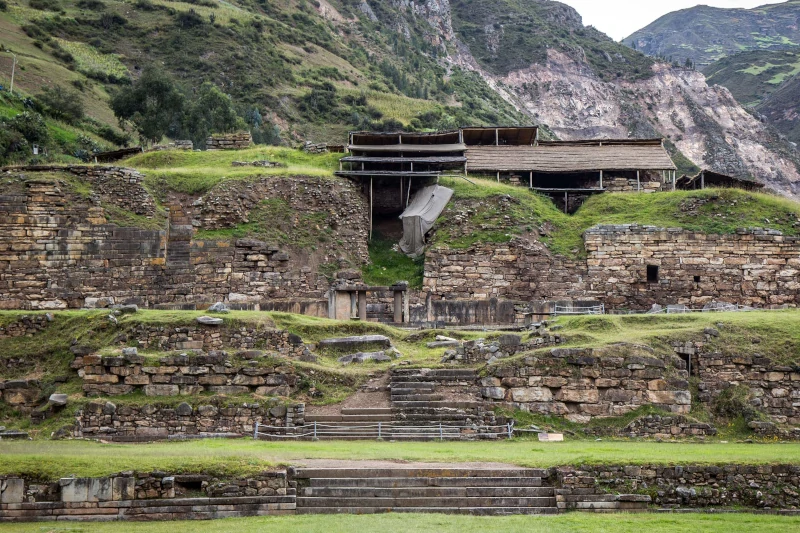
Huaca de la Luna
Huaca de la Luna is a massive adobe pyramid located in the Moche Valley of northern Peru. It was once a major religious and political center of the Moche culture, which dominated the region from 100 to 800 AD. The pyramid is approximately 70 meters tall and covers an area of around 20,000 square meters. The site is famous for its intricate and well-preserved polychrome murals and friezes. These murals depict images of Moche deities, warriors, and daily life.
Huaca de la Luna is also famous for its innovative architectural design. Its design incorporates complex drainage systems, underground chambers, and a large central plaza. Today, the Huaca de la Luna is a popular tourist destination, attracting visitors from all over the world who come to admire its impressive ruins and learn about the rich cultural heritage of the Moche people.
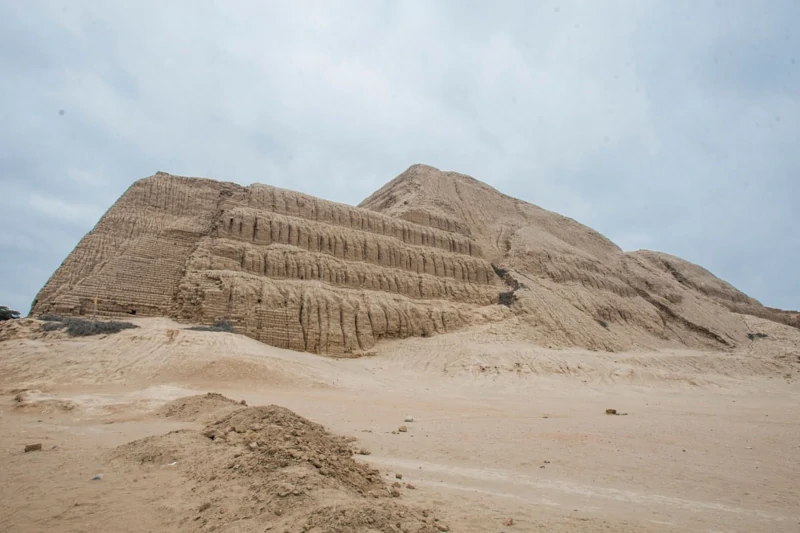
Manu National Park
Manu National Park is a protected area located in southeastern Peru. It covers an area of over 1.5 million hectares and is one of the largest and most biologically diverse national parks in the world. The park is famous for its stunning landscapes, including lowland tropical rainforests, cloud forests, and high Andean grasslands. It is home to an incredible variety of plant and animal species, including jaguars, giant otters, toucans, monkeys, and over 1,000 species of birds.
Manu National Park is also of significant cultural importance, as it is home to numerous indigenous communities. These communities continue to live in the park and maintain their traditional ways of life. Today, Manu National Park is a popular tourist destination. It attracts visitors who come to hike, camp, and explore the breathtaking beauty of this unique and protected part of the world.

Qhapaq Ñan
Qhapaq Ñan, also known as the Inca Road System, was a vast network of roads and trails that stretched across the Andes Mountains in South America. It was built by the Inca Empire between the 15th and 16th centuries. This road system connected the empire’s far-flung territories, from present-day Colombia in the north to Chile and Argentina in the south.
The roads were constructed with remarkable engineering skill, taking into account the challenging terrain of the Andes. They were used for a variety of purposes, including military and administrative control, trade and commerce, and religious pilgrimages. Today, much of the Inca Road System is still visible. The Qhapaq Ñan offer visitors a glimpse into the impressive ingenuity and organizational skills of the Inca Empire. In 2014, the Qhapaq Ñan was designated a UNESCO World Heritage Site, recognizing its importance as a symbol of the Andean cultural and technological achievements.
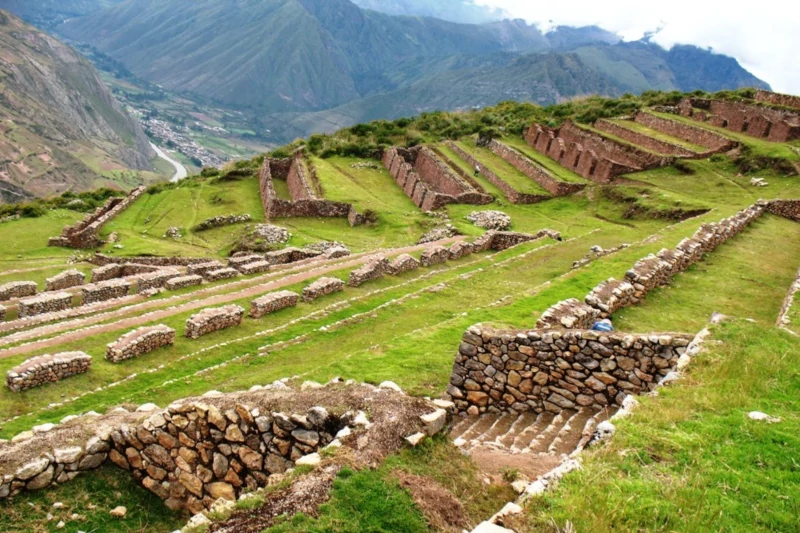
Lima Historical Centre
Lima’s Historical Centre is the heart of the city, located on the central coast of Peru. It is home to many of Lima’s most important historic landmarks, including the Plaza Mayor, the Cathedral of Lima, and the Government Palace. The area is also rich in colonial-era architecture, with many buildings featuring ornate balconies, courtyards, and frescoes.
The Historical Centre is a testament to Lima’s rich cultural heritage. It reflects the influences of the indigenous peoples of the region, the Spanish colonial period, and the subsequent independence of Peru. Today, the Historical Centre is a vibrant and bustling area. It features many restaurants, cafes, and shops, as well as museums and galleries. These places showcase the city’s rich artistic and cultural heritage. It is also a popular tourist destination, attracting visitors who come to experience the history and beauty of one of South America’s most charming and dynamic cities.

Pikillaqta
Pikillacta is an ancient pre-Columbian ruins site located in southern Peru, near the city of Cusco. The site was once a major administrative and military center of the Wari culture, which dominated the region from 700 to 1000 AD. The ruins at Pikillacta consist of a large complex of stone buildings, including barracks, storehouses, and administrative buildings, arranged in a grid pattern.
The site is famous for its impressive architectural style. This style combines elements of Wari and Inca design. Also, it is a well-preserved state, which has allowed for much of the complex to be restored and reconstructed. Today, Pikillacta is a popular tourist destination, attracting visitors who come to learn about the history and culture of the Wari people.
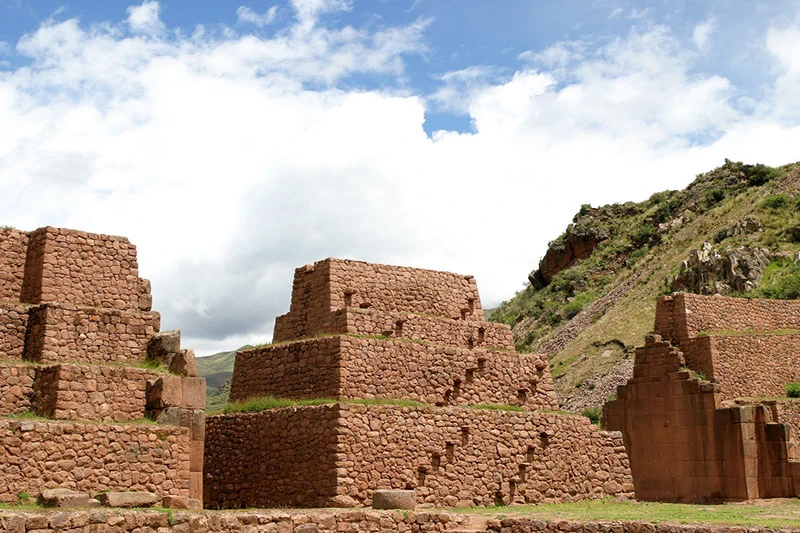
Sipán
Sipan is an archaeological site located in the Lambayeque region of northern Peru. It was once the capital of the Moche culture, a powerful pre-Columbian civilization that dominated the region from 100 to 800 AD. The site was discovered in 1987. Since then, it has been the subject of extensive excavation and research.
Sipan is famous for the wealth of artifacts and treasures uncovered there. These include gold and silver jewelry, elaborate ceramics, and precious textiles. The site is also significant for its well-preserved pyramids, plazas, and other structures. They offer a glimpse into the sophisticated architecture and urban planning of the Moche people. Today, Sipan is a popular tourist destination. It attracts visitors who come to learn about the rich cultural heritage of the Moche and to admire the impressive artifacts and ruins of this ancient city.

Explore the rich history of Peru with us
These 12 UNESCO World Heritage Sites are just a small selection of the many cultural and natural wonders that Peru has to offer. Whether you’re a history buff, an eco-tourist, or simply someone looking for an unforgettable travel experience, Peru is a must-visit destination.
Check our most popular tours and treks in Cusco, Peru:



